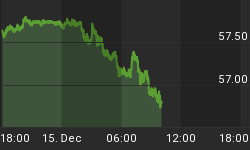The easy part was the bounce. The hard part was knowing that the SP500 was going to gain nearly 5.5% in one week. Did you know? Not me. Anyway, last week is, well, last week's news, and in the markets, the question always is "what's next?" With the "dumb money" still extremely bearish, I suspect those sitting on the sidelines -- and there are a lot of you -- will be angling for entry points on any pullback (if that should occur). I am still a bit concerned that the rally won't go beyond a couple of weeks or stated differently, I don't see last week's blast off as the start of a multi - month up trend. Although the "dumb money" was very bearish (i.e., bull signal) a week ago, none of the other sentiment indicators were in alignment. For example, corporate insiders were not buying to any great degree. Since 2004, the best, most sustainable market moves come when there is a consensus amongst the sentiment indicators.
The "Dumb Money" indicator (see figure 1) looks for extremes in the data from 4 different groups of investors who historically have been wrong on the market: 1) Investors Intelligence; 2) MarketVane; 3) American Association of Individual Investors; and 4) the put call ratio. This indicator is extremely bearish, and this is a bull signal.
Figure 1. "Dumb Money"/ weekly
Figure 2 is a weekly chart of the SP500 with the InsiderScore"entire market" value in the lower panel. From the InsiderScore weekly report: "Transactional volume declined significantly as the quarter wound down and companies closed trading windows. Sellers maintained a narrow edge over buyers, however, both of our key sentiment flashed green indicating positive sentiment. More insiders will be moved to the sidelines during the coming week as the quarter official closes. Transactional volume will continue to slow down and it won't be until earnings season that we get another macro tell."
Figure 2. InsiderScore "Entire Market" value/ weekly
Figure 3 is a weekly chart of the SP500. The indicator in the lower panel measures all the assets in the Rydex bullish oriented equity funds divided by the sum of assets in the bullish oriented equity funds plus the assets in the bearish oriented equity funds. When the indicatoris green, the value is low and there is fear in the market; this is where market bottoms are forged. When the indicator is red, there is complacency in the market. There are too many bulls and this is when market advances stall.
Currently, the value of the indicator is 59.97%. Values less than 50% are associated with market bottoms. Values greater than 58% are associated with market tops.
Figure 3. Rydex Total Bull v. Total Bear/ weekly
If you would like to have TheTechnicalTake delivered to your email in box, please click here: It's free!!!
Let me also remind readers of our Premium Content service, which focuses on daily market sentiment and the Rydex asset data.
















